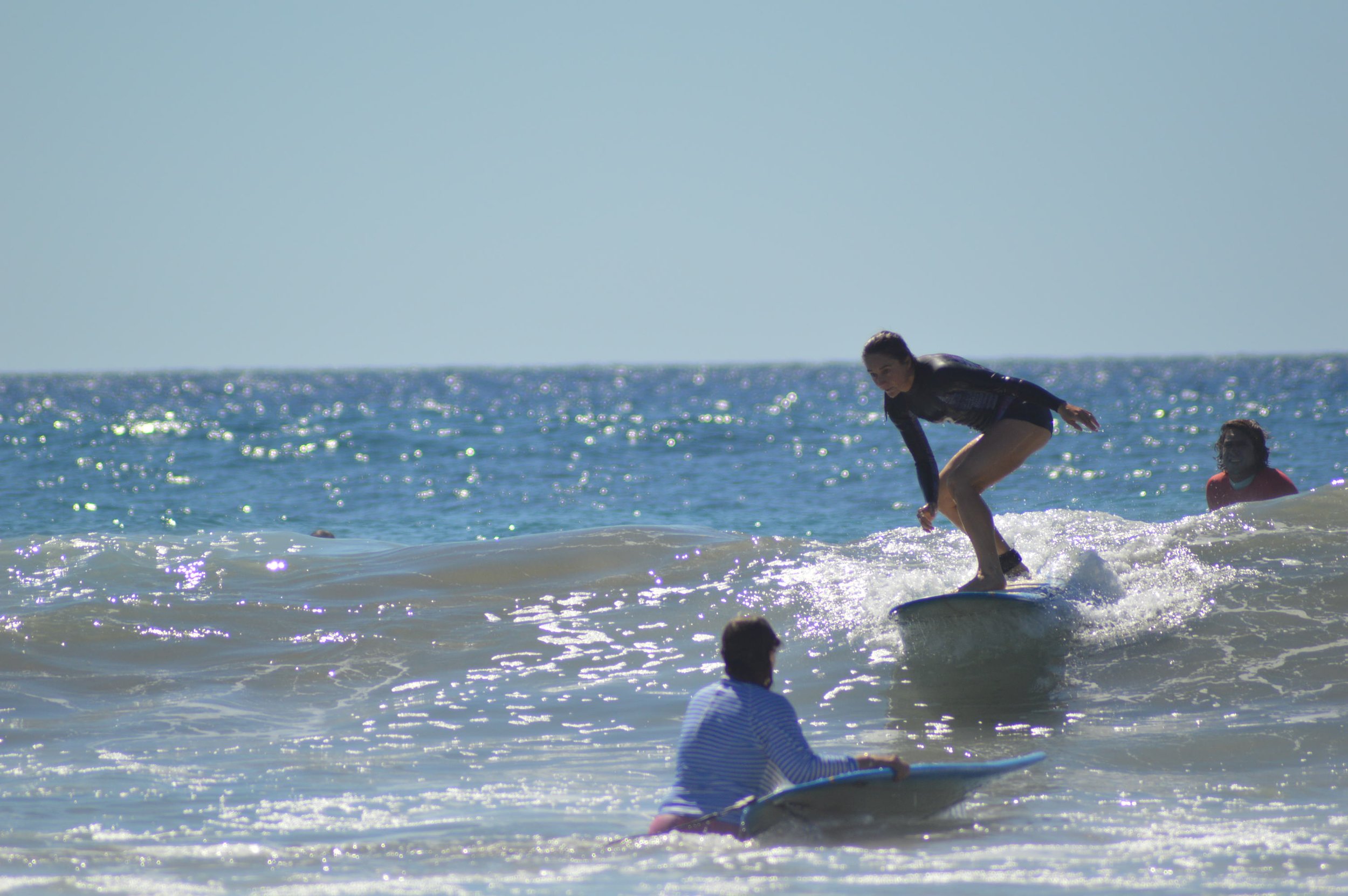What to Expect When Learning to Surf
Learning to surf can be a scary proposition. You're in the ocean. Your feet might touch weird things. There are waves. The image you have of what a surf wave looks like is triple over head. You've been afraid of sharks since you saw Jaws in fourth grade. There are other people on the beach, all of whom, yes, will have nothing better to do than watch you, point, and laugh. In fact, they came their for that purpose, and they don't like your bathing suit either. Does that sound about right?
The good news is, fear is all in your head, and conquering that fear head-on can be the most life changing, empowering thing you've ever done...if you let it. Sure, it's weird learning how to surf as an adult, mostly thanks to a lifetime of developing mental hang-ups that a kid looking wide-eyed at the ocean just doesn't have. My hope is that this little guide will give you an idea of what you can expect when learning how to surf so you're one step closer to saying, yes! I can do this.
Step 1: Learn to Stand Up
Your first surf lesson will have you doing the most basic of basics. Can you even stand up on a surfboard? To begin, can you do it on land? Then, can you do it with the added variable that comes from that surfboard floating (read moving) in about 2 feet of water? Then, can you do it with the added variable of that surfboard floating in 2 feet of water, while being pushed forward by what we call "whitewater," that small frothy lip of a wave that pushes energy up towards shore?
If you think this sounds easy, think again. For someone who's never handled a giant foamy surfboard, which is strapped to your ankle, in whitewater, surrounded by small children and possibly dogs, perfecting this first step can eat up your entire first lesson and then some. The most important thing you'll learn on day 1 is that patience is key.
Step 2: Practice Turning Right or Left
Once you learn how to go from your belly to your feet, and you can do this with at least some semblance of control, the next step is to learn to execute a small turn. Can you point the nose of your board to the left or to the right, with you still on it?
In step 2, you're not just standing, but you're beginning to feel how you can control the direction of the board. This part of the equation can take several sessions to figure out, and it's a great warm-up to repeat at the start of every beginner session, even if you're ready to head out deeper to try to catch some "green waves."
Step 3: Learn to Paddle Out
Before we worry about moving from the shallows further out to where the waves are breaking, we have to understand how to get there. Here, your instructor will teach you about duck diving, "turtling," and paddling up and over the small ones.
Learning to stay safe as a set rolls in, and learning to control your board to keep those around you safe, is very important. Here's where reality sets in. 90% of your life as a surfer is going to be paddling...and waiting. Waiting for the right time to paddle out, waiting for the right wave to take you back in.
Step 4: Riding the Face
A ‘green wave,’ otherwise known as a ‘real’ wave, regardless of how big or small, is the smooth part of the wave that's not all mushy with white water, and it creates the wave's "face," where you're eventually aiming to place your board for a fun little ride.
The first time you head out to a ‘real’ wave, your instructor will go with you to give you a push. The push places you in the wave, so all you have to do is stand up, make your turn, and not fall down. Step 4 is all about feeling the same things you've been doing (standing and turning) on the face of a real wave. A green wave adds momentum, and while that can be scary, it also adds potential stability.
Step 5: Catch Your Own Wave
While it would be nice to have a helper push us into the wave every time, we eventually must learn to catch a wave on our own. Here's where more paddling comes in. We learn to look back, read the situation, understand when to paddle, when to butterfly, and when to kick like hell, so we can be in the right place at the right time to get swept up by the wave and....fall. Ultimately you want to stand up at that point, but there's going to be a lot of falling at first.
Step 6: Practice Again And Again
With practice, resiliency, determination, and most likely a lot of luck, you'll catch your first wave! The first time you ride down the face of a wave, with the board perfectly connected, you'll know. It will feel so easy, it will feel so right, it will feel like you're one with the universe, and it will feel like you know how to surf.
Not so fast with that last part. Because you'll try to do it again and...well...that's where patience comes in again. A lifetime of surfing is a lifetime of practicing to surf. Welcome to the most amazing sport ever, and welcome to chasing waves for the rest of your life.




